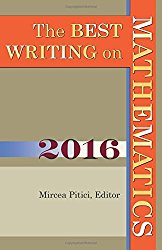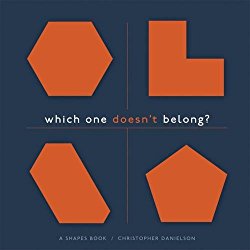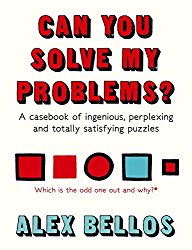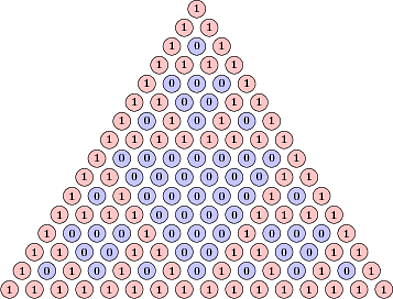I married an American citizen and moved to the US in 1990. At the time I was a very patriotic Russian. It took me a year of pain to realize that some of my ideas had been influenced by Soviet propaganda. After I washed away the brainwashing, I fell in love with the US. For 25 years I thought that America was great. Not anymore.
For the last several months I’ve been worried as never before in my life. I feel paralyzed and sick. To help myself I decided to put my feelings in words.
World War. My mom was 15 when World War II started. The war affected her entire life, as well as the lives of everyone in the USSR. Every now and then my mom would tell me, “You are lucky that you are already 20 and you haven’t witnessed a world war.” I moved to the US while my mom stayed back in Russia. From time to time I tell myself something like, “I am lucky that halfway through my expected lifetime, I haven’t had to live through a world war.” It’s been more than 70 years since WWII ended. To maintain the peace is a difficult job. Everything needs to be in balance. Trump is disrupting this balance. I am worried sick that my children or grandchildren will have to witness a major war.
The Red Button. I’ve noticed that, as a true showman, Trump likes misdirecting attention from things that worry him to fantastic plot twists that he invents. What’s the best way to make people forget about his tax returns? It’s the nuclear button. Dropping a nuclear bomb some place will divert people from thinking about his tax returns. As his plot twists are escalating, is he crazy enough to push the button?
Climate. The year 2014 was the warmest on record. The year 2015 was even warmer. And last year, 2016, was even warmer than that. I remember Vladimir Arnold’s class on differential equations. He talked about a painting that had been hanging on a wall for 20 years. Then it unexpectedly fell off. Mathematics can explain how such catastrophic events can happen. I keep thinking about our Earth: melting ice, dead reefs, fish eating plastic, and so much more. My grandchildren might not be able to enjoy beaches and forests the way I did. What if, like the fallen painting, the Earth can spiral out of control and completely deteriorate? But Trump is ignoring the climate issues. Does he care about our grandchildren? I am horrified that Trump’s policies will push climate catastrophe beyond the point of no return.
The Truth. Wiretapping is not wiretapping. Phony jobs numbers stopped being phony as soon as Trump decided that he deserved the credit. The news is fake when Trump doesn’t like it. Trump is a pathological liar; he assaults the truth. Being a scientist I am in search of truth, and Trump diminishes it. I do not understand why people ignore his lies. Two plus two is four whether you are a democrat, or a republican, or whomever. Facts are facts, alternative facts are lies. I am scared that lies have become acceptable and no one cares about the truth any more.
Russia. I lived in Russia for the first unhappy half of my life, and in the US for the second happy half. I do not want to go back. There is something fishy between Putin and Trump. Whether it is blackmail or money, or both, I do not know the details yet, But Trump is under Putin’s influence. Trump didn’t win the elections: Putin won. This horrifies me. I do not want to go back to being under Russian rule.
Gender Issues. I grew up in a country where the idea of a good husband was a man who wasn’t a drunkard. That wasn’t enough for me. I dreamed of a relationship in which there would be an equal division of work, both outside and inside the home. I could not achieve that because in Russian culture both people work full-time and the wife is solely responsible for all the house chores. Moreover, Russia was much poorer than the US: most homes didn’t have washing machines; we never heard of disposable diapers; and there were very long lines for milk and other necessities.
The life in USSR was really unfair to women. Most women had a full-time job and several hours of home chores every day. When I moved to the US, I thought I was in paradise. Not only did I have diapers and a washing machine, I was spending a fraction of the time shopping, not to mention that my husband was open to helping me, and didn’t mind us paying for the occasional babysitter or cleaner.
For some time I was blind to gender issues in the US because it was so much better. Then I slowly opened my eyes and became aware of the bias. For some years it has felt like gender equity was improving. Now, with a misogynistic president, I feel that the situation might revert to the dark ages. When women are not happy, their children are not happy, and they grow up to be not happy. If the pursuit of happiness is the goal, the life has to be fair to all groups. But Trump insults not only women but also immigrants, Muslims, members of the LGBTQ community, as well as the poor and the sick. The list is so long, that almost everyone is marginalized. This is not a path towards a happy society.
Democracy. Trump attacks the press and attempts to exclude them. Trump has insulted the intelligence community and the courts. He seems to be trying to take more power to the presidency at the expense of the other branches of government. He ignores his conflicts of interest. Trump disregards every rule of democracy and gets away with it. I am horrified that our democracy is dying.
Tax Returns. Trump’s tax returns could either exonerate him or prove that he is Putin’s puppet. The fact that he is hiding the returns makes me believe that the latter is more probable. Why the Republicans refuse to demand to see his returns is beyond my understanding.
Corruption. Trump does so many unethical things. Most of his decisions as president seem to be governed by Trump trying to get richer. Let us consider his hotel in Azerbaijan—a highly corrupt country. Having lived in a highly corrupt country myself, I know how it works. For example, an Azerbaijani government official who has access to their country’s money can make a deal that involves a personal kickback. This means that their government is paying more than necessary for a service or product in order to cover that kickback. This is how national money makes its way into individual pockets. Since all the deals in Azerbaijan are reputed to be like that, I imagine that when Trump built his hotel there, the Trump organization was overpaid in order to cover the bribe to local officials. Will our country become as corrupt as Azerbaijan?
Americans. The biggest shock of the election was that so many people were so gullible and actually voted for Trump. They didn’t see that his agenda is focused on his own profit, and that he lies and makes promises he doesn’t plan to deliver. It really terrifies me that there are some people who are not gullible but still voted for Trump.
Is there hope?
Share:





 The Best Writing on Mathematics 2016 is out. I am happy that my paper The Pioneering Role of the Sierpinski Gasket is included. The paper is written jointly with my high-school students Eric Nie and Alok Puranik as our PRIMES-2014 project.
The Best Writing on Mathematics 2016 is out. I am happy that my paper The Pioneering Role of the Sierpinski Gasket is included. The paper is written jointly with my high-school students Eric Nie and Alok Puranik as our PRIMES-2014 project.


